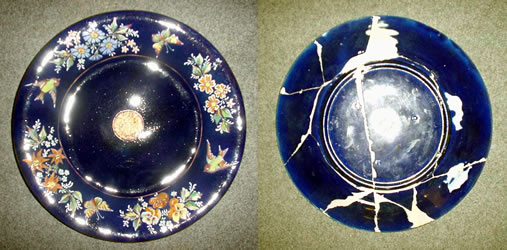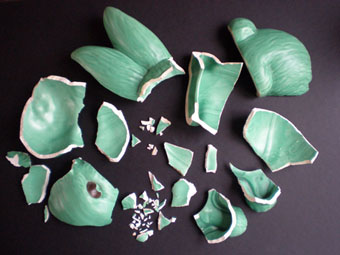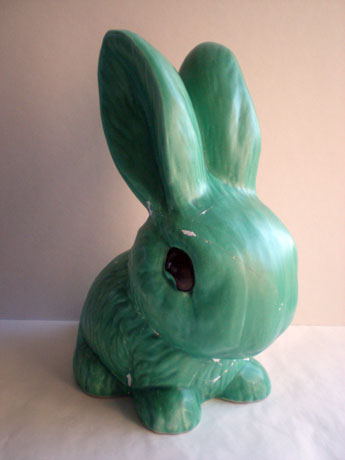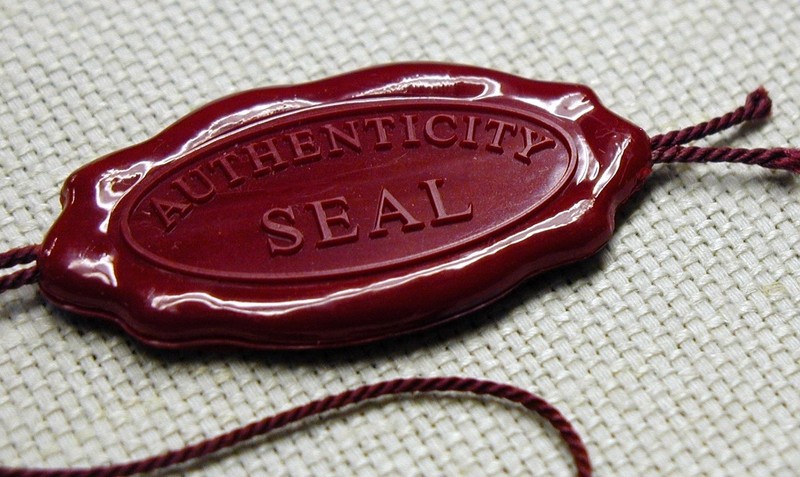There is no way to restore pottery and porcelain that is wholly undetectable. Certain techniques are almost invisible but usually there is a way to detect them.
Teeth, tongues, lips, cheeks and nose :
When you watch experts examine a piece of pottery or porcelain for restoration you will see them use a variety of methods; from tapping against the teeth to touching with the tongue, lips, etc. This allows them to detect any differences in temperature or texture some may even sniff the item to detect the lingering smell of solvent or paint. Use these methods regularly and your rate of detection will improve the more you do it.
Keys and Coins :
Very gently tapping with a small metal item such as a key or a coin will often show up an area that has been replaced using a composite material. If, for example, a figure has lost a hand and part of the arm has been remade, there will be a difference in the sound given off when the area is tapped. Start at the shoulder and tap as you gently but consistently move slowly down the arm, when the sound changes from a clink to a dullish clunk you have probably found a repair. If the arm has only been broken and repaired, say at the elbow, then the clink sound will return as you continue down the arm to the hand. This method is ideal for figures but can be used on other items as well.
Translucency ( porcelain only) :
Porcelain plates, saucers, vases, etc will often be translucent, any cracks or breaks which have been filled or painted over will be visible when the item is held up to a strong light. With long necked vases, or hollow items, it is possible to hold a small inspection torch inside the body and the light will shine through and reveal any obvious repairs.
Pins and other small sharp objects :
It is very easy to detect restoration using a pin or a small sharp knife which will show the difference between restored porcelain, (soft, like a painted surface) and fired porcelain (hard, like glass). Practice this method by using a pin to touch a painted surface such as a window frame or radiator, this will feel soft and the point of the pin will drag on the surface. Then touch or lightly drag the pin against a piece of glass and you will notice that the pin will glance off or glide along the surface. You may not be very popular if you try to use this method in a dealers shop or during an auction viewing, but if you are very careful it shouldn’t cause any damage.
Ultra Violet Light :
This was quite a good method of detection, but many modern restoration techniques do not show up under ultra violet light. Where it does work the ultra violet Light can show up any new paint that has been added over a repair, although it can mislead you when gauging the size of the repair, as some restorers will over-paint a larger area in order to disguise the begriming and end of the repair; this means that under ultra violet light, restoration can look much worse that it really is.
What repairs can be done?
- Completely broken items rebuilt.
- Dirty items cleaned.
- Missing hands/heads/tails etc sculpted and replaced.
- Cracks sealed.
- Missing sections filled.
- Broken pieces reattached.
- Old repairs made good (discoloured glues/badly glued together).
Below is the extent to which pottery can be restored






















